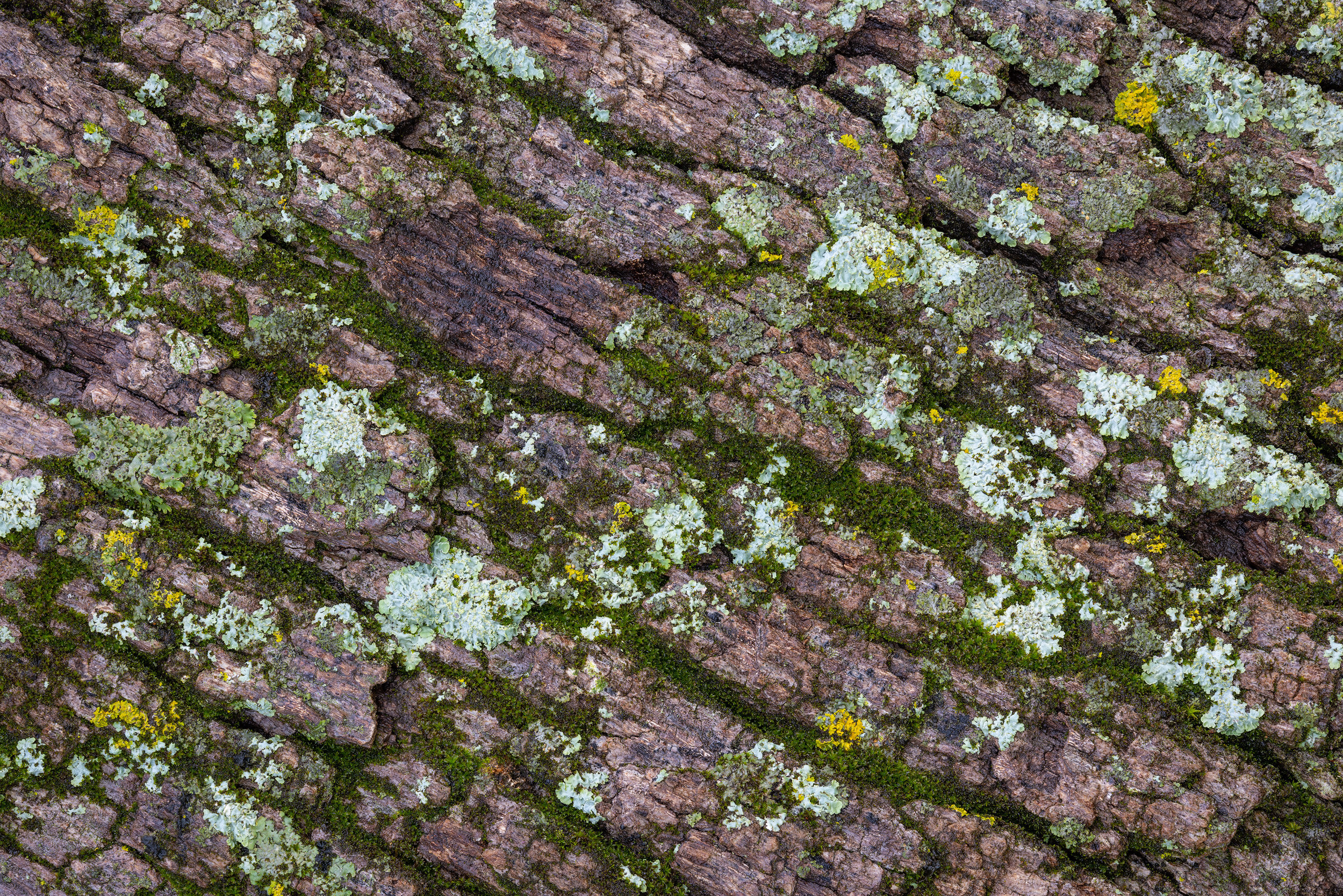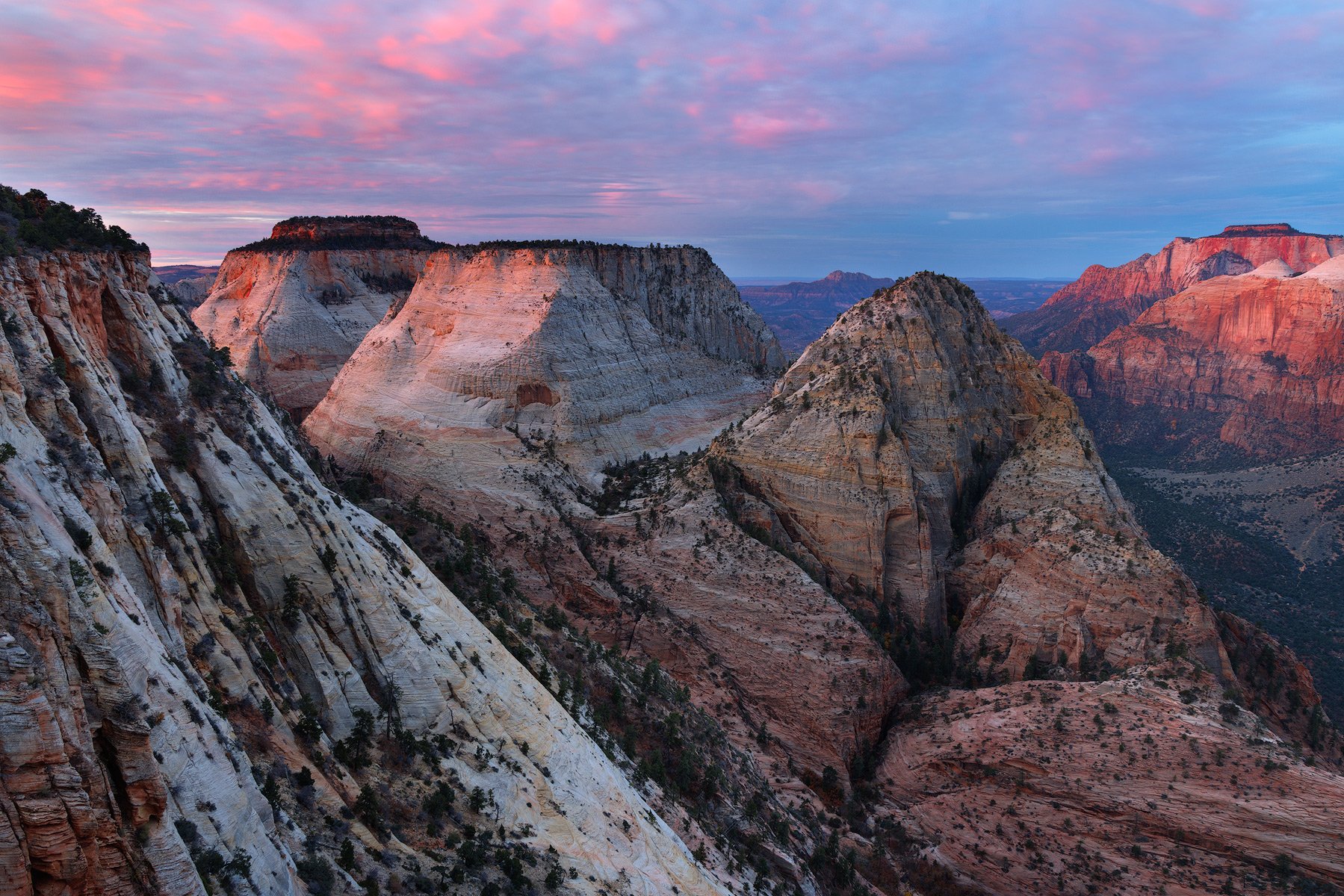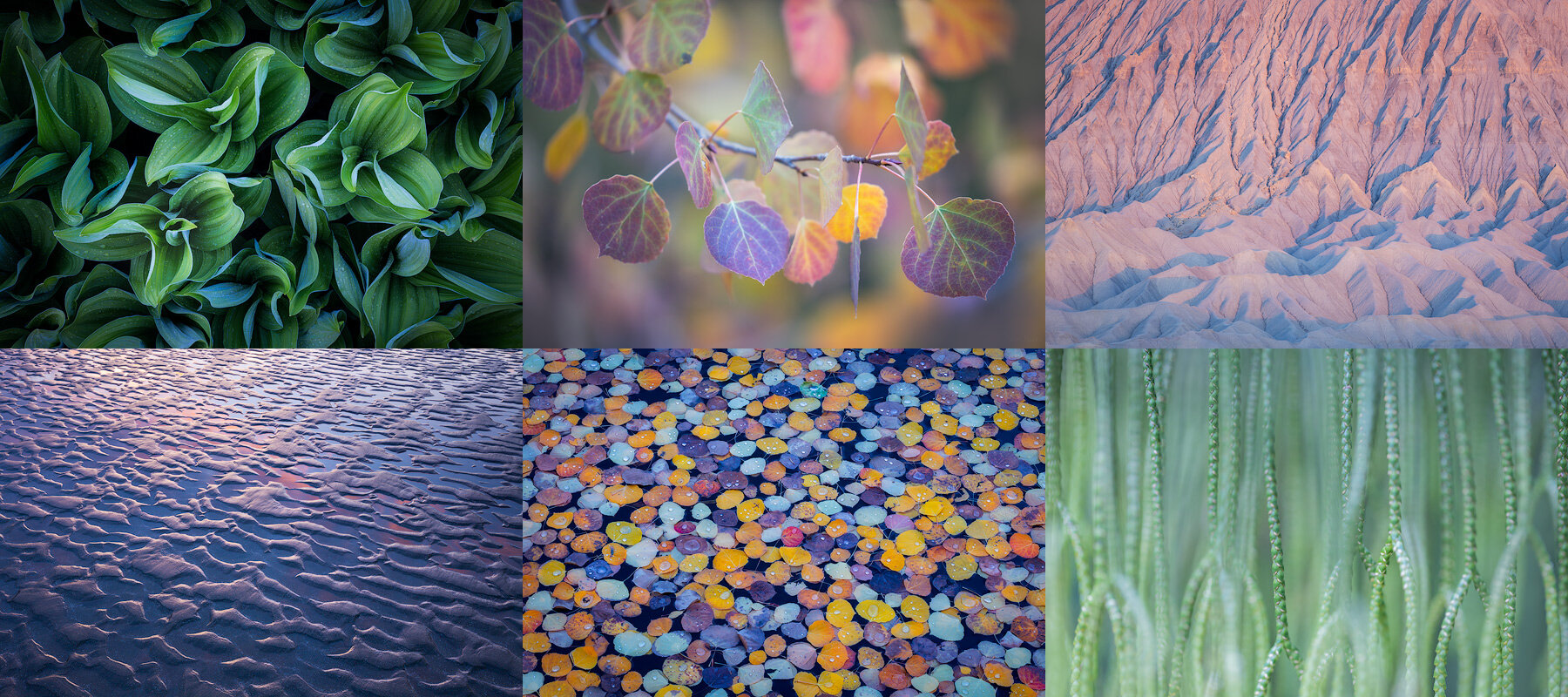Ron is sharing a new portfolio of his autumn photography from Colorado and Zion National Park today. Like most of our recent work, he is sharing the photos in a PDF portfolio ebook (you can download it here, no email address or sign-up required). Each time we share one of these new ebooks, we receive a lot of questions that fall into two categories: why do you share your work this way and how can I create a similar PDF for my own work? We will answer both of these questions in this article.
Read MoreThe Death Valley Landscape and Nature Photography Guide
The Mesquite Flat Sand Dunes in the late afternoon on a clear day.
To the uninitiated, it can seem strange to have a photographic obsession with a place called Death Valley National Park. Yet, after visiting for first time, most nature and landscape photographers quickly come to understand the appeal. The scenery is diverse, vast, surreal, and dynamic, all of which are qualities that make this landscape exciting for nature photography. For us, Death Valley holds the only permanent spot among our favorite places, with the other spots rotating based on recent trips we have enjoyed. It fully deserves this honor!
While visiting remote parts of the park is exciting, the more easily accessible landscape photography locations, like Badwater Basin, the Mesquite Flat Sand Dunes, and Zabriskie Point, are all equally incredible. This makes the park a great option for both short trips and extended explorations. Another benefit: when it is cold and snowy elsewhere, the weather in Death Valley is generally mild, at least at the lower elevations. With Las Vegas only a few hours away, this park is also easy to get to for anyone in North America.
Read MoreIntegrating Gratitude Practices Into Nature Photography
Thanksgiving is my favorite holiday, partially because it involves cooking a large, complicated meal and I always enjoy cooking—and sharing—large, complicated meals. My holiday meal this year was complicated because I did all of the cooking myself, not because I selected any fancy recipes. After integrating more modern dishes over the last few years, the traditional sides—sweet potato casserole, mashed potatoes, green bean casserole, biscuits, corn, and stuffing—seemed most appealing as I prepared my grocery list so those are the dishes that ended up on my table (in addition to a less traditional apple cake for dessert).
Another thing I appreciate about Thanksgiving is seeing other people share their gratitude. Amidst so much constantly heavy, negative news, it is lovely to enjoy a day of reading posts that focus on positive things. After seeing these many posts plus some news stories about the mental health benefits of expressing gratitude, I went down a rabbit hole of reading to learn more. This short article from Arthur Brooks at The Atlantic (gift link with no paywall) is a nice summary of the research, historical underpinnings, and practical advice about “Four Ways to Be Grateful—And Happier.” The reason I appreciated this article in particular is how Brooks likens gratefulness to exercise: to the reap the benefits, you have to practice.
Read MoreQ and A: Naturalist Apps, Connecting with a Landscape, and Photographic Celibacy
Using the iNaturalist app plus field guides helped me identify some locations where this plant might grow within Death Valley National Park. iNaturalist’s companion app, Seek, is one of my favorite apps for the reasons I explain below.
In August, a publication invited me to participate in an extended interview and then repeatedly delayed publishing it. Instead of hoping the interview might eventually run someday, I decided to withdraw it and publish it in two parts on my website instead. You will find part one below.
Read MoreNotes From an Over-Photographed Landscape
Afternoon shadows fall across the Grapevine Mountains in Death Valley National Park.
PREFACE: This is the introductory essay for ebook portfolios covering my extended 2021-22 trip to Death Valley National Park. You can download these ebooks, for free, here to see the full collection of photographs.
With our Airstream RV trailer, we are able to work remotely for long stretches, so we packed up for the desert and arrived in Death Valley National Park right before Christmas, 2021. We stayed through late February, 2022, giving us about eight weeks in the park. Aside from two weeks of formal work (teaching workshops), I photographed, hiked, or both almost every day. This portfolio is the result of those efforts.
By the time we left to return home, the list of Death Valley canyons I have visited had many new entries, for a total of fifty-four. I can now say I have backpacked across Death Valley’s floor, an experience that makes the incredible vastness of the park feel much more profound than contemplating those same distances from the roadside. The scenery, as always, was endlessly enchanting. Solitude was easy to find. With photography friends coming and going, the trip felt a little like summer camp. As with every trip to this park, the list of new things I want to see is much longer than the list I had when I arrived. With the weather getting increasingly warm in late February, I knew it was time to head home but still tried to convince Ron that we should stay for just one more week. Just one more.
Read MoreRon's Recent Work and 2021 Favorites
“Mountain of the Sunrise” - A colorful sunrise in Zion’s backcountry
Sarah and I have had a busy last few months. Since late August we’ve driven to Chicago and photographed the Chicago Botanic Gardens, drove home to briefly photograph fall in Colorado, drove east to photograph Acadia with a quick stop in Vermont, drove home and left two days later for Zion National Park where we spent three weeks in the trailer and a few nights in our tent. All of this while working (me as a full time software developer, and Sarah by teaching at many of the places we were visiting). By the end, actually well before the end, we were exhausted!
I would much rather have this level of intensity where I spend multiple weeks in a location rather than the weekend warrior style of being at a place for 3 days and not getting a chance to explore it deeply. There is probably a healthier balance out there - one that continues to remains elusive though almost certainly involves less driving.
All of that is a long winded way of saying I have a bunch of new photos from Colorado, Vermont, Acadia, and Zion (over 150, I know…), and because it’s the end of the year, a gallery of my 50-ish favorites from 2021, all linked below.
Read MoreNew Ebook - Lessons from the Landscape: Yellowstone National Park
I am happy to announce my newest ebook, Lessons from the Landscape: Yellowstone National Park, which includes an almost entirely new portfolio of photographs, eleven personal essays, and six practical case studies. This is my most personal project yet, and I am excited to share it with you.
You can get the ebook for the discounted price of $19.95 through Tuesday, September 14. See below for more details.
New Black and White Plant Photos
I am continuing to work through my archive of unprocessed files and processed-but-never-finished-and-shared files. At each turn, it feels like the scope of the project grows, mostly because integrating new photos into existing portfolios means that I also need to spend time updating and revising formerly finished files since my tastes have changed significantly over the last few years. I am making slow progress in the right direction so I hope to have a lot of new photos to share as I plod along through my Lightroom catalog.
One of my recent projects focused on finishing some new black and white photos of plants. I added about twenty new photos to our website and then split up a single gallery into three galleries for more cohesive organization.
Read MoreMindset: A Comparison of Expectation-Driven and Experience-Driven Photography
Coastal Gems
Over the weekend, I participated in the Out of Chicago (OOC) LIVE online conference as one of the instructors. This is the third online conference OOC has offered during the pandemic and they all have been such inspirational weekends. (Although the live conference is over, you can still purchase the recordings through April 16 and then access the sessions for the next year.) The organizers always pull together a great mix of inspiration, motivational storytelling, and practical education. I am usually on the side of practical education since that is what comes most naturally to me but last weekend, I had the chance to speak in one of the full conference keynote spots and give an “inspirational” talk. It felt like a big stretch and I was super-nervous leading up to my session but once it was over, I felt like I could do more on the “inspiring” side with some practice.
I chose “shifting your mindset” as the topic of my talk, with a focus on thinking about how you show up and the positive and negative ramifications of the ideas you bring along with you. The role of expectations in nature photography is one of the three areas I talked about, with the encouragement to set aside expectations and show up with an open mind. Generally, I think of expectations as blinders that you put on before you ever get out of the car, often leading to being laser-focused on a preconceived idea that may or may not materialize. By putting the expectations mindset aside, you can instead show up with an openness to serendipity and the opportunities that are in front of you at the moment instead of the conditions or compositions you hoped for that may never materialize.
Read MoreRon's Recent Work from Colorado and Utah
Sarah and I recently returned from a trip to Zion National Park. With our self-contained trailer it is remarkably easy to stay away from people, which we managed to do for the entire trip, our only visits up the main canyon were on bike. Prior to Zion we photographed fall colors here and there around our home in southwest Colorado. Here’s a selection of my photographs from that period, you can see the full gallery here, which includes over forty new photographs.
Read MoreFree Recorded Webinars for Nature Photographers from Nature Photo Guides
Over the last few months, I have recorded six free webinars for nature photographers in partnership with photography friends (David Kingham, Jennifer Renwick, John Barlcay, Cole Thompson, Alister Benn, Alex Noriega, and TJ Thorne). This post collects all of these recordings in a single place for easy access and viewing. You can access the recordings through the links to our YouTube channel or find the embedded videos below.
Offering these webinars has been a highlight during a difficult time and it was so nice to connect with photographers across the globe through these sessions. After taking a break from offering webinars to finish my 11 Composition Lessons ebook, I will be starting these sessions up again soon in some to-be-determined format. If you have a topic in mind that you would like to see covered in a future webinar, please let me know.
Read MoreComposition & Photographing Nature’s Small Scenes: 5 Essential Ideas
With composition, we are able to take the elements of nature that we connect with the most and arrange them in a manner that communicates our visual preferences and the stories we want to tell about our subjects. In this way, composition serves as an intensely personal window into how we see the natural world and choose to present it through our photography. In writing my most recent ebook, 11 Composition Lessons for Photographing Nature’s Small Scenes, I spent a lot of time thinking about the themes in my composition habits and find that these five ideas are most essential:
#1: Abstraction: See Beyond the Literal Qualities of Your Subject
#2: Simplification: Compose Around a Core Concept
#3: Exclusion: Elevate Your Subject by Eliminating Context
#4: Structure: Seek Out Scaffolding for Your Composition
#5: Details: Pay Attention to the Small Stuff
These ideas are the versatile, practical composition concepts that I return to again and again. Instead of relying on rigid rules (like the rule of thirds) that do not necessarily align with every photographer’s goals for personal expression or every scene we will come across, these ideas are instead tools for the toolbox that we can apply in a wide variety of scenarios to a broad range of subjects.
Read More






